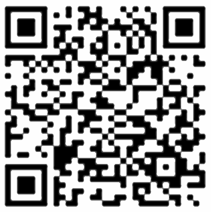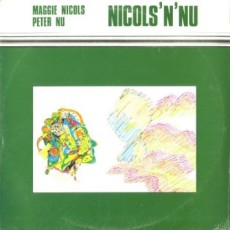
Daily Dose Of Jazz…
Maggie Nicols or Nichols, as she originally spelt her name as a performer, was born Margaret Nicholson on February 24, 1948 in Edinburgh, Scotland. At the age of fifteen she left school and started to work as a dancer at the Windmill Theatre. Her first singing engagement was in a strip club in Manchester a year later. At about that time she became obsessed with jazz, and sang with bebop pianist Dennis Rose. From then on she sang in pubs, clubs, hotels, and in dance bands with some of the finest jazz musicians around.
In 1968, Maggie went to London and joined an early improvisational group, the Spontaneous Music Ensemble, and performed at Berlin’s new avant-garde festival. In the early 1970s she began running voice workshops at the Oval House Theatre, acted in some of the productions and rehearsed regularly with a local rock band. Shortly afterwards she became part of Keith Tippett’s fifty-piece British jazz/progressive rock big band Centipede. She joined Brian Eley and formed the vocal group Voice, and around the same time began collaborating with the Scottish percussionist Ken Hyder and his band Talisker.
By the late 1970s, Nicols had become an active feminist, co-founded the Feminist Improvising Group, organized Contradictions, a women’s workshop performance group in 1980 and dealt with improvisation. Over the years, Nicols has collaborated with other women’s groups, such as the Changing Women Theatre Group, and even wrote music for a prime-time television series, Women in Sport.
Nicols has also collaborated regularly over the years with Swiss pianist Irene Schweizer and French bassist Joelle Leandre, touring and recording. She continues her duo collaboration with Ken Hyder, pianists Pete Nu and Steve Lodder, with her own daughter, Aura Marina, with avant-gardists Caroline Kraabe, Charlotte Hug and lighting designer Sue Neal. She performs throughout Europe and internationally at a variety of creative and improvised music festivals.
More Posts: vocal
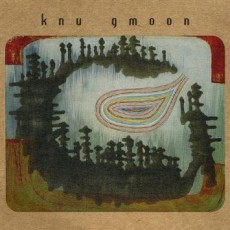
Daily Dose Of Jazz…
Noah Jarrett was born on January 2, 1978 and raised between New Jersey and New York City. He began studying the electric bass at age nine, after five years of violin. His initial interest was in the many forms of rock and spent most of his days after school playing in his basement with friends.
His taste would evolve and he would lean towards jazz, reggae, Indian, African and Gnawan music while also studying the classical traditions. For nine years he primarily has studied the double bass but still plays his electric bass, ultimately graduating from the New England Conservatory. Jarrett plays in a variety of groups around New York and Boston including current group Fat Little Bastard and The InBetweens. He accompanies virtuosic Malian kora player Mamadou Diabatein a variety of music settings.
In addition, Noah plays with a 14-piece band, the Brooklyn Qawwali Party, which commemorates the late Sufi singer Nusrat Faeh Ali Khan. The group uses Pakistani qawwali melodic and propulsive rhythms as a basis for further improvisations.
Double bassist Noah Jarrett has played with John Abercrombie, George Garzone, Bob Gulotti, Bill Goodwin and numberous other New York City musicians. He continues to perform and record.
More Posts: bass
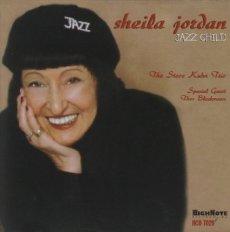
Daily Dose Of Jazz…
Sheila Jordan was born Sheila Jeanette Dawson on November 18, 1928 in Detroit, Michigan but grew up in Summerhill, Pennsylvania. By the age of 28 she returned to Detroit and began playing piano and singing semi-professionally in jazz clubs. She worked a trio that composed lyrics to Charlie Parker’s arrangements, who influenced her greatly.
In 1951, she moved to New York and started studying harmony and music theory with Lennie Tristano and Charles Mingus and married pianist Duke Jordan a year later. By the 60s she was gigging and doing session work in Greenwich Village and around town in various clubs; and in 1962 was discovered and recorded by George Russell on his album The Outer View. That led to her recording Portrait of Sheila in 1962 that was sold to Blue Note.
Over the next decade Sheila withdrew from music, supported herself as a legal secretary but by the mid 70s was working again with musicians like Don Heckman, Roswell Rudd, Lee Konitz and Steve Kuhn. She has had a notable career as a solo artist since then with her ability to improvise entire lyrics, although success has been limited.
Jordan has been an Artist In Residence teaching at City College, worked in an advertising agency, recorded for Steeplechase, ECM, Home Eastwind, Grapevine, Palo Alto, Blackhawk and Muse record labels. She has performed and recorded with George Gruntz, Steve Swallow, Carla Bley, Harvie Swartz and Bob Moses among others and as a songwriter continues to work in both bebop and free jazz mediums.
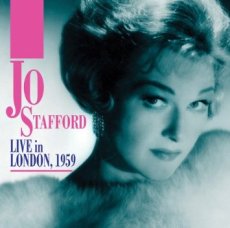
Daily Dose Of Jazz…
Jo Elizabeth Stafford was born on November 12, 1917 in Coalinga, California. Her mother was an accomplished banjo player who folk songs became of great influence. Her first public singing appearance came in Long Beach when she was 12. She attended Long Beach Polytechnical High School with dreams of a career in opera but with the onset of the Great Depression she joined her sisters and became The Stafford Sisters. Popularity grew and they got their start at KNX Radio when Jo was just 18 and went on to perform at KHJ Radio in Los Angeles
The sisters found work in the film industry as backup vocalists, made their first recording with Louis in 1936 and a year later she created arrangements for Fred Astaire on the soundtrack of “A Damsel In Distress”. Jo went on to join the Pied Pipers, work with Tommy Dorsey in New York, record four sides for RCA Victor and then returned to Los Angeles. After the Dorsey years the group was signed to Johnny Mercer’s new label Capitol Records and started singing on the radio shows of Frank Sinatra, Bob Crosby and Mercer.
In 1944, Stafford left the Pied Pipers going solo, picked up the nickname G.I. Jo for her continuous performance for the US troops, hosted “The Chesterfield Supper Club” and before the decade ended had a couple of million-seller tunes. By the 50s she was doing work for Voice of America, recording at Columbia Records becoming the first artist to sell 25 million records and hosted The Jo Stafford Show on TV. In the Sixties she recorded for Reprise, Warner and Dot record labels in the Sixties, won a Grammy for Best Comedy Album for her performance a part of the comedy duo Jonathan and Darlene Edwards.
Stafford went into semi-retirement in the mid-60s citing the music business as no longer fun and retiring completely in 1975. She devoted her time to charity for those with developmental disabilities. She donated her library to the University of Arizona and was inducted into the Big Band Academy of America’s Golden Bandstand in 2007.
Jo Stafford, singer of jazz standards and tradition pop music whose career spanned thirty years passed away of congestive heart failure on July 16, 2008. Her work in radio, television and music is recognized by three stars on the Hollywood Walk of Fame.
More Posts: vocal
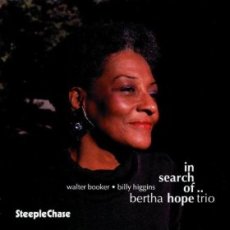
Daily Dose Of Jazz…
Bertha Hope was born Bertha Rosemond on November 8, 1936 and raised in Los Angeles, California. At age three she began studying classical piano and at a young age she was playing and learning from other young musicians in her neighborhood such as Richie Powell and Elmo Hope. Hope attended Manual Arts High School, performed in numerous nightclubs around town and went on to study piano at the Los Angeles Community College, finally receiving a B.A. in early childhood education from Antioch College.
In 1957 she married Elmo and relocated to the Bronx, New York, working at the telephone company during the day and performing at night. After her husband’s passing ten years later, Bertha continued to present his music and remained an active force in improvised music within the New York jazz scene. Her second husband, Walter Booker Jr., worked with her to keep the music of Elmo Hope alive through their tribute ensemble called “ELMOllenium” and The Elmo Hope Project.
The composer and arranger has recorded for Steeplechase, Minor and Reservoir record labels, has toured extensively through Japan, plays with the group, Jazzberry Jam in addition to leading The Bertha Hope Trio with Walter and Jimmy Cobb and has taught an advanced jazz ensemble at the Lucy Moses School in NYC, and an introduction to jazz program at Washington Irving High, sponsored by Bette Midler.
More Posts: piano


